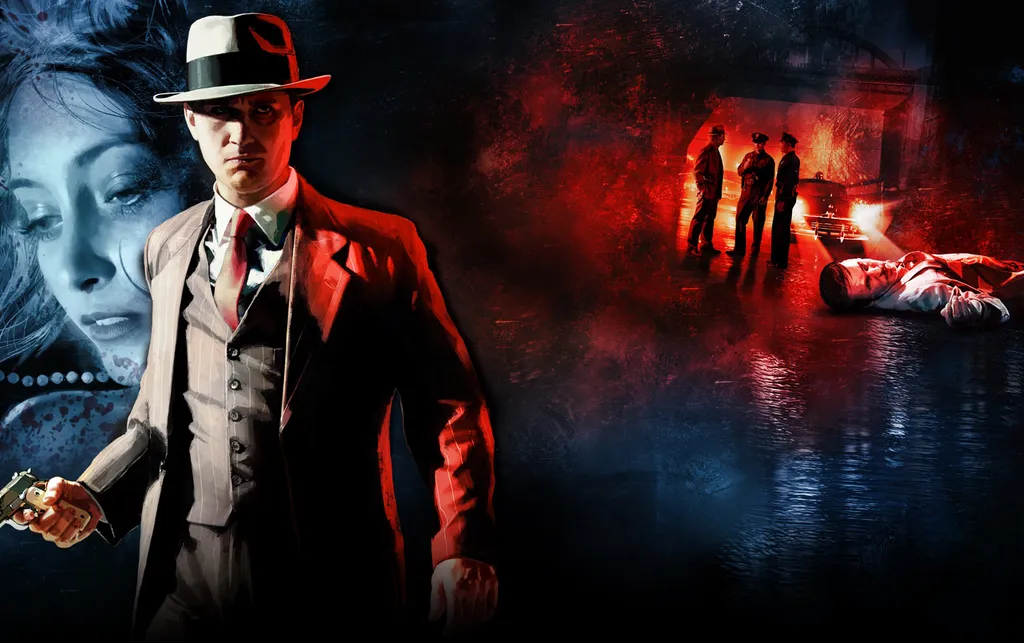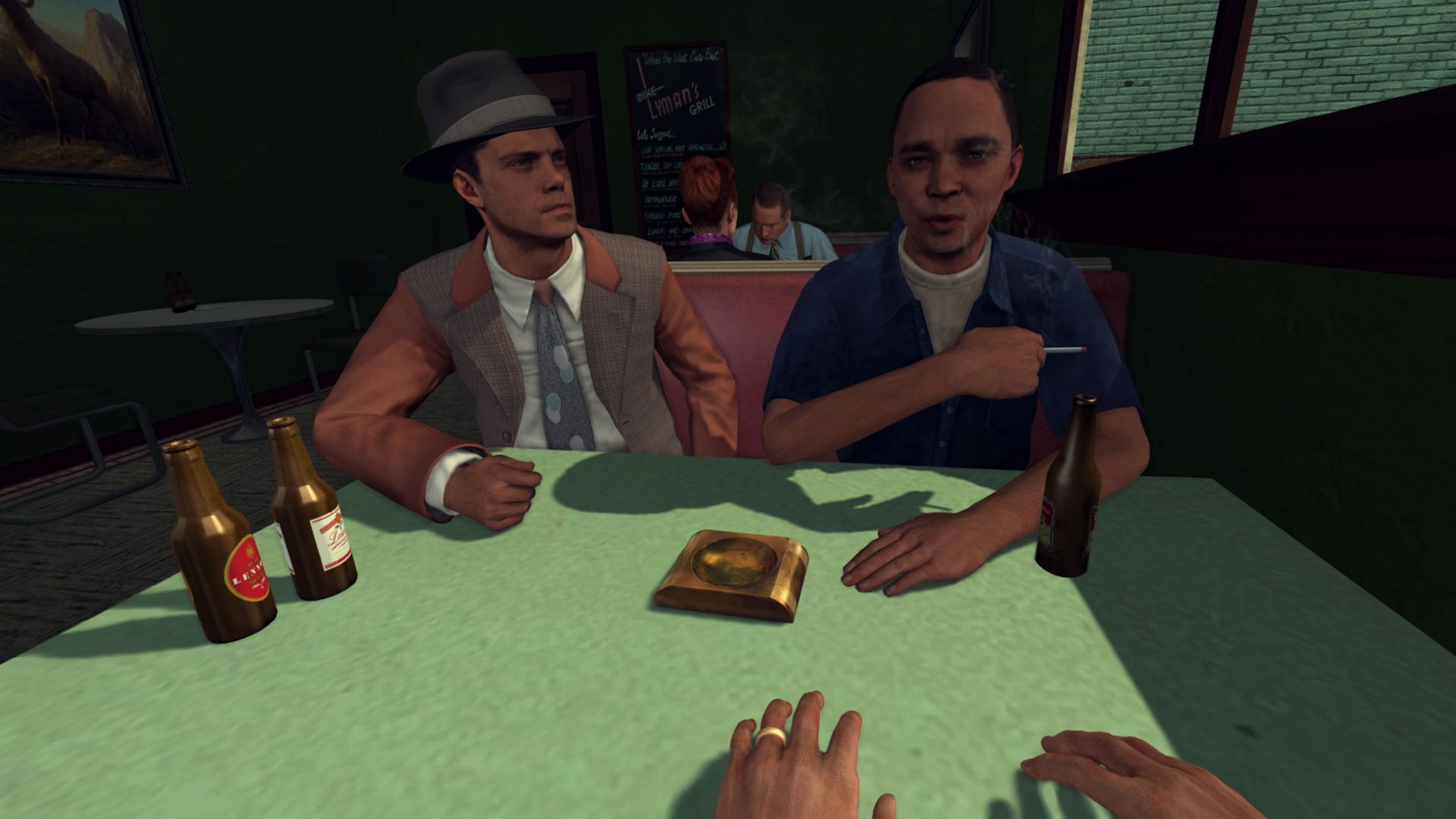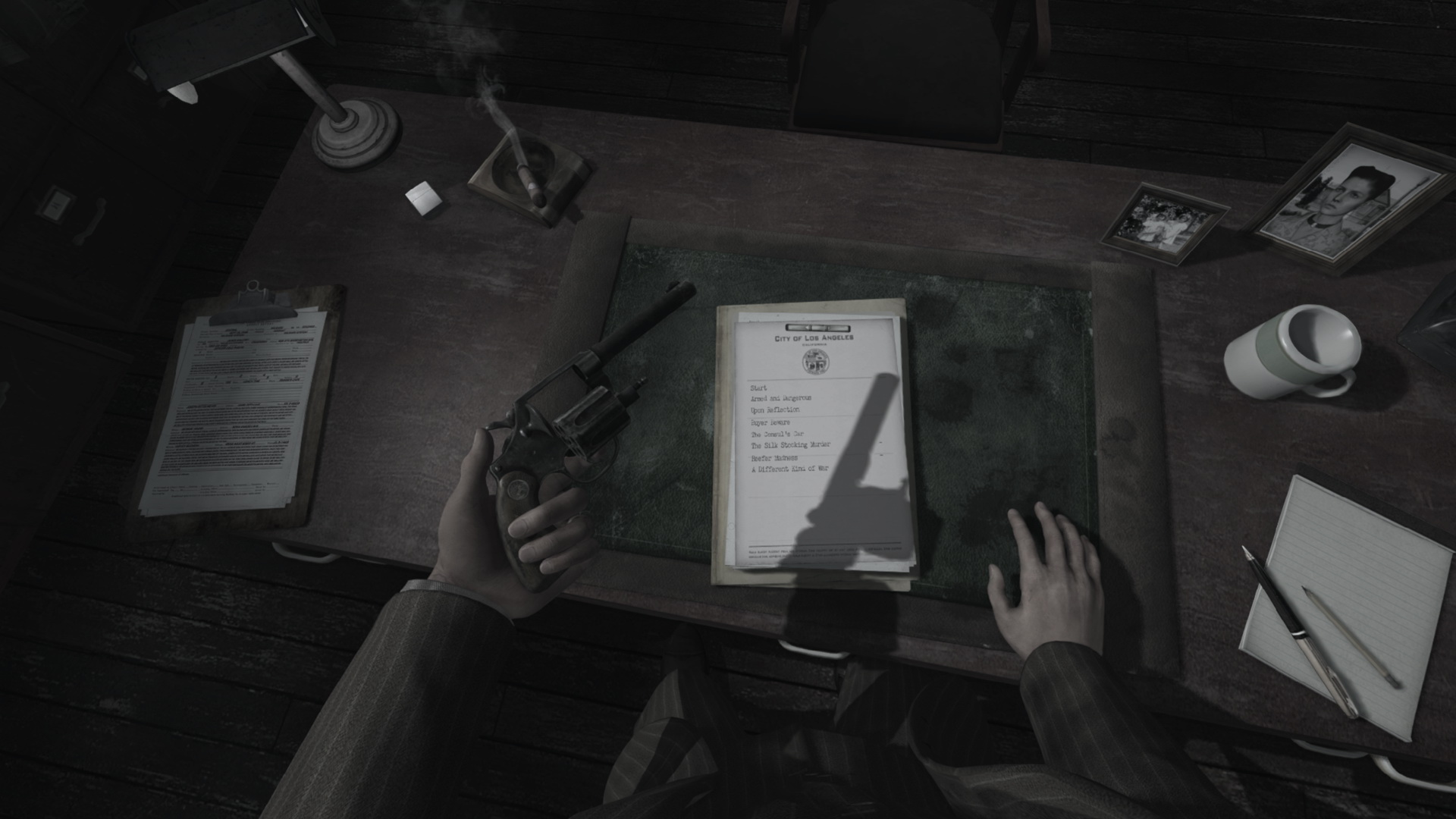What makes a good VR game? The answer to that question varies depending on who you ask, which platform the game is running on, and what the game in question’s actual intentions are. I’d hold a game like Rec Room to a different standard and criteria than I would a game like Skyrim VR, for example. But when it comes to evaluating a game’s mechanics vs. its sense of presence, immersion, and scale, it gets tricky. LA Noire: The VR Case Files is the most recent reminder of this nuance.
For all intents and purposes, LA Noire VR is one of, if not the, largest and most detailed sandbox worlds we’ve seen in VR to date. With eight square miles of meticulously crafted 1940s-era Los Angeles all represented, you can walk around the streets for hours and not see every corner of the city. It took me over 20 minutes to drive from one of the early mission locations to the center of Hollywood Boulevard. That’s pretty massive.
In LA Noire VR you take on the role of LAPD detective Cole Phelps, who is portrayed both physically and in dialog by actor Aaron Staton (Mad Men). The original non-VR game was developed in partnership between Team Bondi and Rockstar Games for PS3, Xbox 360, and PC back in 2011. Since then it’s been remastered for PS4, Xbox One, and Nintendo Switch, with this most recent VR iteration serving as a spin-off of sorts.
LA Noire VR does not include the entire game but is instead a collection of seven hand-picked cases that were rebuilt from the ground-up specifically to serve as the most effective showcases for VR integration. In the game you’ll explore crime scenes, collect evidence, interrogate witnesses, chase down criminals, and even engage in intense fist fights and firefights around downtown 1940s LA.
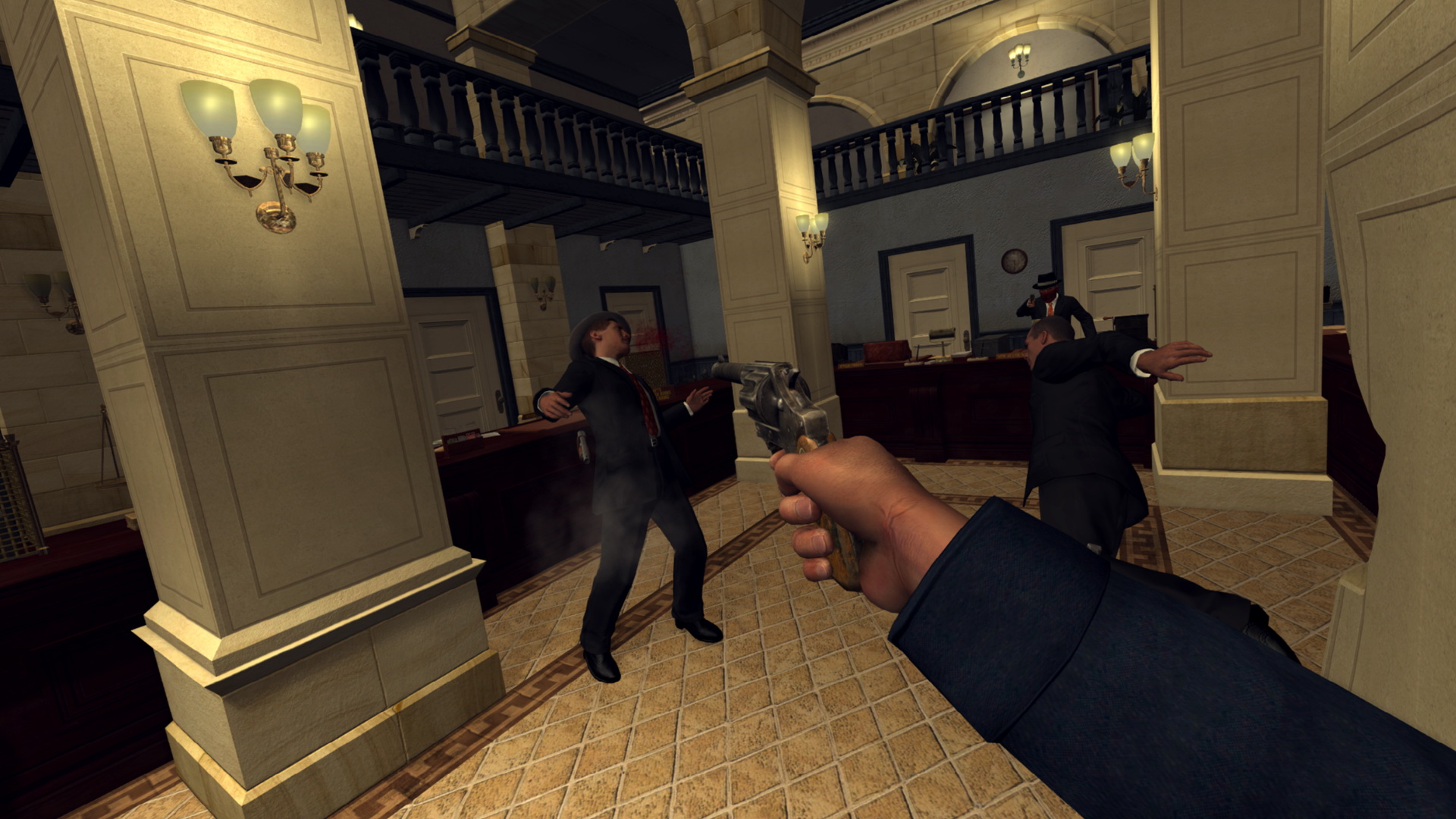
During the first livestream we did for LA Noire VR the size of the game world hit me hardest when I decided to look at the full map. After walking around for a few blocks, just to explore, I decided to look up where Hollywood was located. After scrolling the map upwards for several seconds it really hit me: eight square miles is a lot of room.
I hopped in my car, turned the ignition, put my hands on the wheel, and hit the gas. After driving for over 20 minutes I finally reached the center of Hollywood Boulevard and I had to navigate there using a map and environmental landmarks. I’ve never done anything like that in a VR game before and it’s a tantalizing tease of what the future of VR games could be like.
As massive and sprawling as this recreation of LA may be though, it’s noticeably empty. The original game featured a collection of side missions and street crimes to respond to, which lent a certain degree of unpredictable life to the atmosphere. In LA Noire VR, none of that extra content is present. You could drive in circles all around the city if you wanted, but it’d be aimless and pointless.
Since you’re only playing seven hand-picked cases as entirely standalone experiences, they’re not really tied together with any sort of greater narrative thread. When you finish a mission the game reloads you at the start of the next case. You don’t spend time turning in assignments or doing things between missions. It’s almost like a “greatest hits” auto-playlist through specific portions of the game’s content rather than a true open world game.
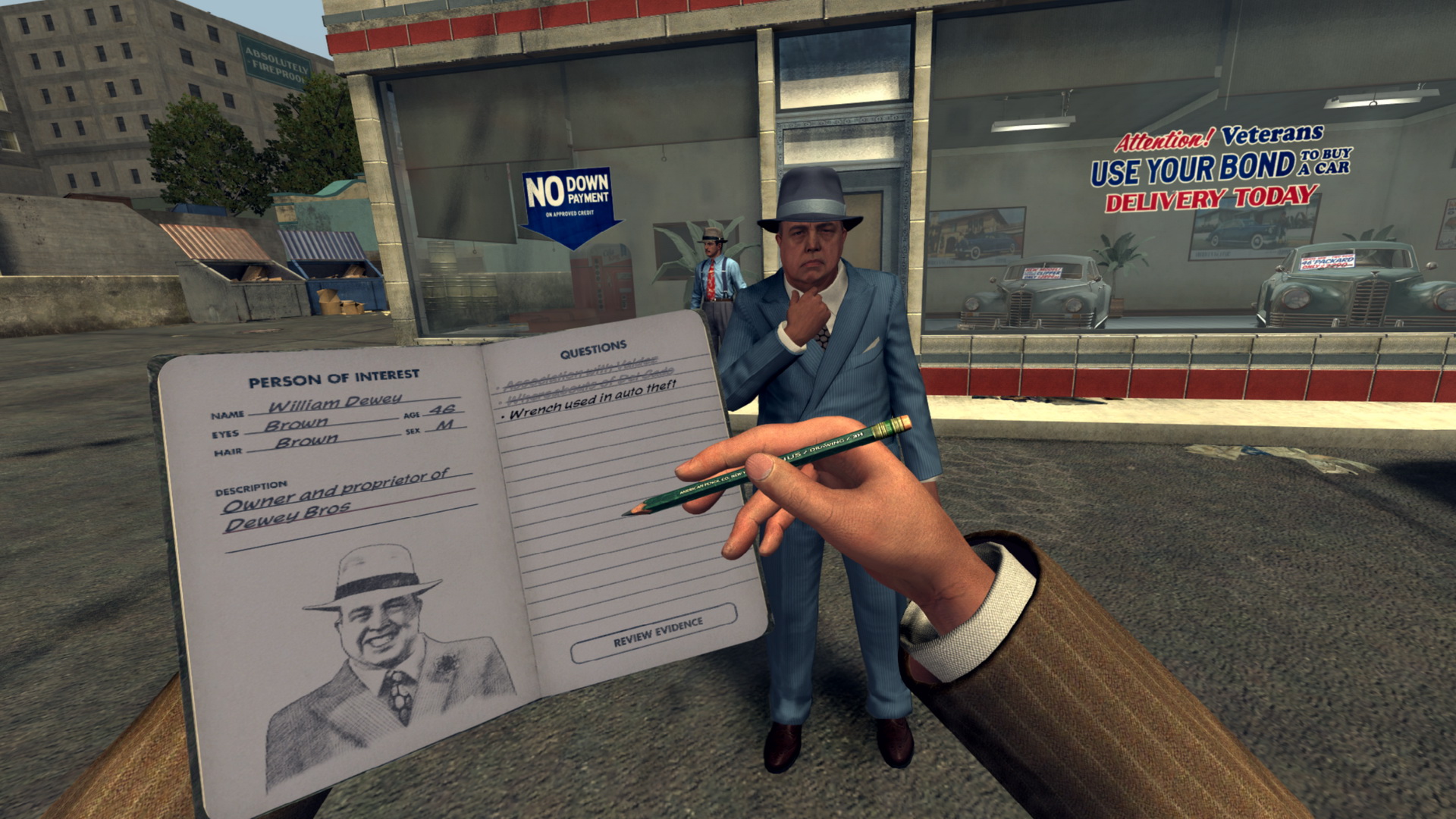
Other than the seven linear, pre-defined missions, it’s a shockingly empty and lifeless world even if it does let you drive around at your leisure which is a real shame. The characters individually as animated pieces of digital code come to life like few other VR games have been able to accomplish (only Lone Echo really comes to mind) with incredible facial animations, but before long they all feel the same. They’re just different clothes and different faces all representing the same aimless, robotic wandering of the city.
And as what can only be assumed is a VR comfort decision, the team at Rockstar Games left out a lot of movement-based animations. If you activate a ladder for example, instead of actually climbing up the ladder, the screen fades out and then fades back in with you at the top. This wouldn’t be much of an issue if it didn’t happen all the time when you enter and exit cars or buildings, use stairs and ladders, or crash into things while driving. It’s jarring and takes me out of the experience completely.
During the interrogation scenes is when LA Noire VR really comes to life. Getting up close and personal with violent criminals as they try to lie their way out of scenarios and dance around topics is incredibly intense. Using your notepad (as in actually holding the notepad with a pencil that lets you scribble and select topics) you can mention pieces of evidence and even accuse them of lying or committing crimes.
Navigating the minefield of conversation is a big part of what makes LA Noire VR so immersive. I often found myself getting so worked up that I’d belt out responses and questions before my character ever had the chance to as if the NPCs were really standing right in front of me. Mastering the art of reading faces and voices is crucial and really does make you feel like a detective.
All of the other pieces of the game such as driving, fighting, and exploring crime scenes feels fine, but never quite measures up to the interrogation moments. Shooting, in particular, is great since each scene has a ton of cover to duck behind and use. Pumping a shotgun to reload and then popping up from behind my police car to blast a robber in the face fulfills a very specific carnal desire like few games can.
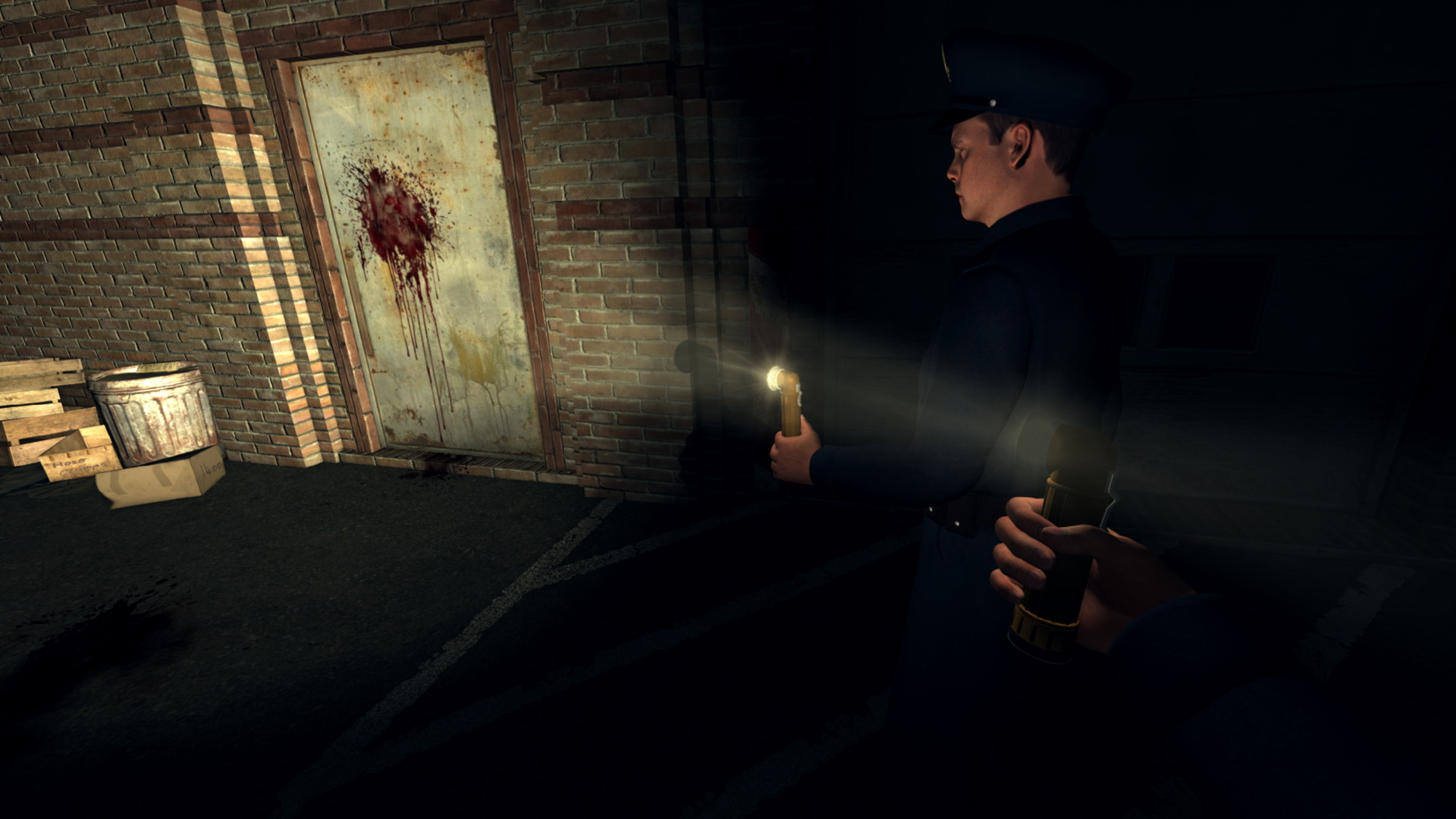
LA Noire VR features a handful of locomotion systems too, which is nice to see. You can either just look at points of interest and click the right trackpad to have your character switch to third person as they walk there, or you can aim an icon that sends your character walking to a defined spot, also in third person. Alternatively, you can use an arm-swinging locomotion system or a more traditional smooth movement arrangement.
I found myself using the arm-swinging locomotion mostly because it added to the sense of realism in the game world to slowly swing my arms as I walked down the street and explored crime scenes. However, it was a bit wonky and didn’t always let me move in the direction I intended.
In terms of length it lasts a fair number of hours, maybe 8-10 total, but you can easily expand that if you spend some time exploring the city as a whole or cut it down if you don’t explore much. There are also brand new collectibles in this version of the game in the form of novels and badges spread out across the entire city.
LA Noire VR is a tricky game to evaluate because it breaks so much new ground. Whereas games like Skyrim VR and Fallout 4 VR may have slightly larger game worlds, arguably, that are full of things to do and see, it’s a very different setting. With LA Noire, Rockstar Games has realized one of the most elaborate modern-day settings in VR date.
Somewhere between the pang of regret I felt as I hit my first pedestrian while driving and the feeling of visceral satisfaction that jolted through my body when I slapped a perp across the face, I knew LA Noire was something special. It’s the perfect game for Rockstar to use as a test case for VR and we can’t wait to see which game they bring VR support to next.
LA Noire VR is a special kind of VR game that we’ve yet to see on any platform. With a massive, sprawling open world that’s laid out before players, waiting to be explored, the sense of scale is wonderful — even if the world itself is empty and lifeless. Interrogations, crime scenes, and action moments all feel great, but they’re too few and far between with only seven total cases. But given the scope and abbreviated implementation of one of gaming’s most unique properties, LA Noire VR is an absolutely riveting adventure.
You can download LA Noire: The VR Case Files on Steam with official HTC Vive support right now for $29.99. Read our Game Review Guidelines for more information on how we arrive at our review scores.

